A GORILLA 40 YEARS OLD!
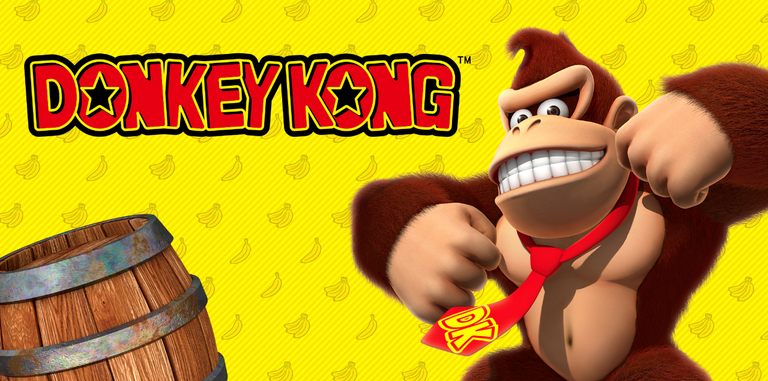
Nintendo was together with Taito, Namco and Sega one of the pioneers of arcades in Japan. In the 1970s he had been quite successful with his light shotguns developed by Gunpei Yokoi in collaboration with Masayuki Uemura and Genyo Takeda. The success of Space Invaders and Galaxian ushered in the golden age of the arcades. Nintendo created its Nintendo of America headquarters in 1980. Yamauchi's son-in-law, Minoru Arakawa was at the helm, in New York City, to join the arcade success. That same year he began to have his first international success with the Game and Watch.
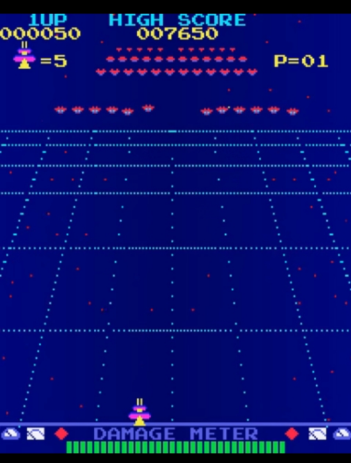
But the arcade world gave him some initial stumbling block. The Nintendo RD2 created Radar Scope, a static shooter clearly inspired by the titles of Taito and Namco. It took four months to get the booths to New York. And the result was a disaster. Arakawa moved the headquarters to Seattle, to reduce the shipping time between the Japan and the United States headquarters. He asked Yamauchi to provide him with a more successful game that could run in existing booths. The president ordered Miyamoto to create a new arcade while he was trying to get Popeye's license, but it was delayed.
Popeye was transformed into Jumpman. Technical limitations conditioned its appearance. He drew himself with a cap so as not to draw hair, and with a mustache so as not to draw a smile. He wore a red jumpsuit and a blue T-shirt to better see the movement. Olivia transformed into a blonde girl who ended up calling herself Pauline. Brutus ended up being a huge Gorilla, which was not unpleasant, the funny thing is that he took the name of the villain and not the protagonist. Eventually, at the American subsidiary, Jumpman was nicknamed Mario because of his resemblance to the eponymous owner of the warehouses used by Nintendo, and Miyamoto ended up accepting it.
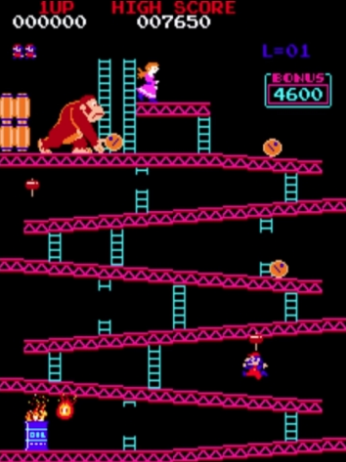
The origin of the name Donkey Kong is diffuse and there is much unsubstantiated rumor mill. A possible Miyamoto or communication error that changed "Monkey" to "Donkey", or that they wanted to give it the sense of "stupid or stubborn", or that they wanted to avoid conflicts with the movie King Kong. Miyamoto raised many characters and even rockers, but for Yokoi he was laborious and Nintendo had to rush to plug the hole in Radar Scope.
In the end they focused on platforms, barrels and ladders. Shigeru wanted it to have more than one phase, since the hits of the time like Space Invaders or PacMan only had one that was repeated. The designer himself created the music with an electronic keyboard. The game took five months to be programmed and was ready in July 1981. At headquarters the game was very popular. Not so much in the American subsidiary. But in the end the ROM boards were shipped to adapt the Radar Scope ones. The American subsidiary created the vinyls for the art of furniture.
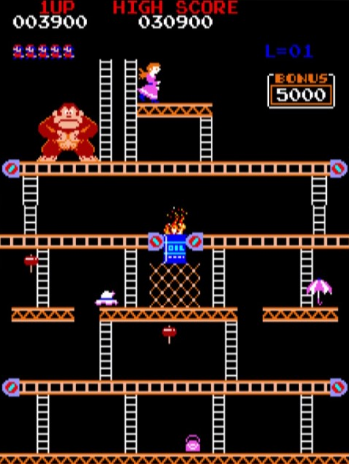
They managed to sell the 2000 adapted Radar Scope units. At the end of the year there were already 4,000. Nintendo began to manufacture the machines in Seattle to save time between Japan and North America and by the year of its launch there were already 60 thousand cabins distributed in the US and Canada. The cabin ended up selling 132 thousand units worldwide and is the fourth best-selling in history, only behind PacMan -1980-, Space Invaders -1978- and Street Fighter II -1991-.
Universal sued Nintendo in 1982 for patent infringement. He considered Donkey Kong to be easily confused with King Kong. After several trials and appeals the result was in favor of Nintendo. This not only allowed the name and the game to continue to be used, but it also gave Nintendo more strength in its presence in America. Lawyer John Kirby was awarded handsomely by Nintendo, and ended up being the inspiration for Nintendo's Kirby character.
CONVERSIONS
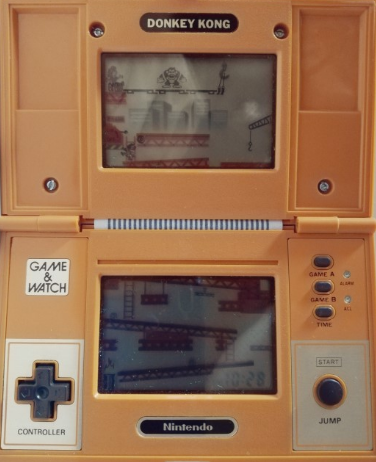
Within Nintendo itself, three adaptations stand out. Yamauchi wanted to take his success in arcades to his another success in pocket machines. So he commissioned Yokoi to work on a version. Miyamoto in turn created a simplified version. Through two connected screens, we first dodged barrels and then hooked ourselves to a crane to remove the hooks from the platforms where the gorilla was. By removing all four hooks we had a story ending with the stunned gorilla and our girl throwing hearts.
He was again able to create an addictive game with a closed plot. In turn, Yokoi was able to create one of his best inventions: The spider. This small cross allowed a good control and close the machine so as not to lose portability. It ended up being included in all its later controls and consoles. This pocket version sold more than a million copies.
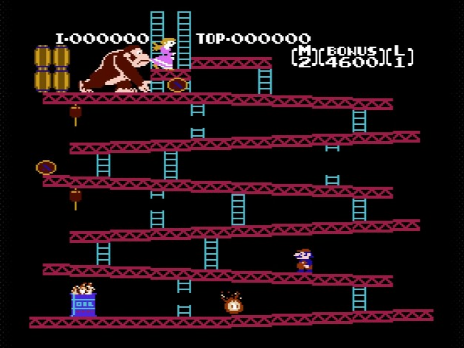
A decade later, in 1994, there was an expanded version for the Game Boy handheld. It was also the first game to be programmed with functions for the Super Game Boy, the Super Nintendo game adapter. If we played it in 16bits, the adapter added frames that were reminiscent of the original arcade vinyl. The game starts from the four initial phases that we have to complete and adds 97 more until reaching 101 levels. It presents some playable differences over the original base. Mario can fall something more than before, he can catch objects, even grab barrels. He can take a hit, without dying, if he carries an object, thereby losing the object. In addition to Donkey Kong, Donkey Kong Jr. makes an appearance who will try to hinder Mario's advance. This version shipped 3 million copies.
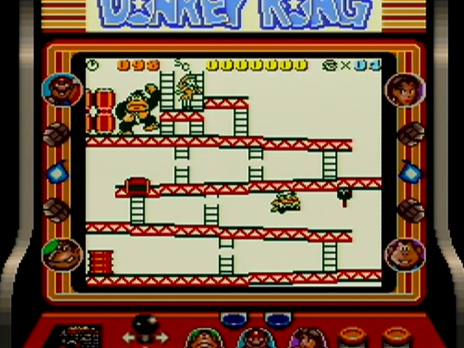
Donkey Kong had many other later installments where he moved between platforms, adventures, and even musical games. He is a Nintendo icon who participates in many spin offs and other sagas as another character from the Mario universe. In this same portal I premiered with a review of his most successful saga on Donkey Kong Country consoles.

Donkey Kong is such a nostalgic character for me. Donkey Kong Country 2 on my Gameboy Color was one of my favorite pastimes as a kid! Thanks for sharing some history and background on a classic. 😃 I enjoyed reading about the origin of Mario and good old DK!